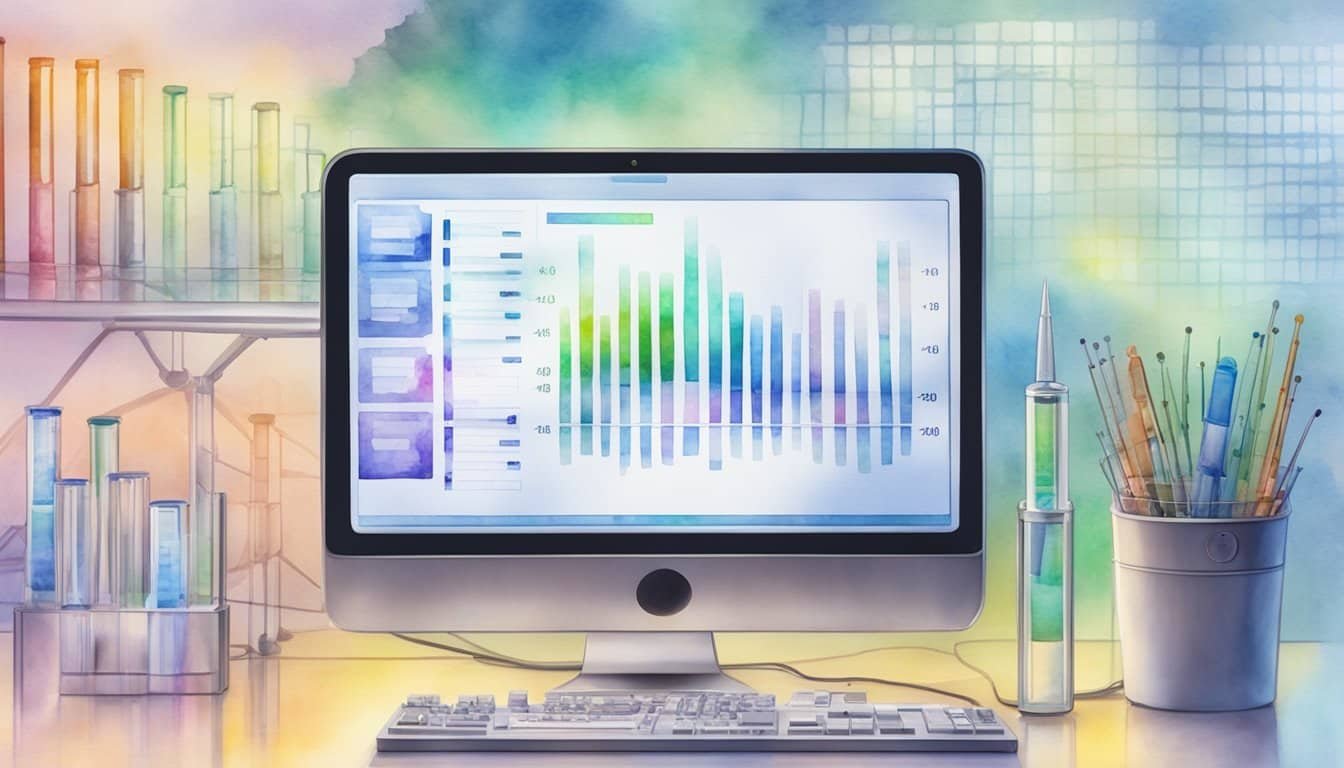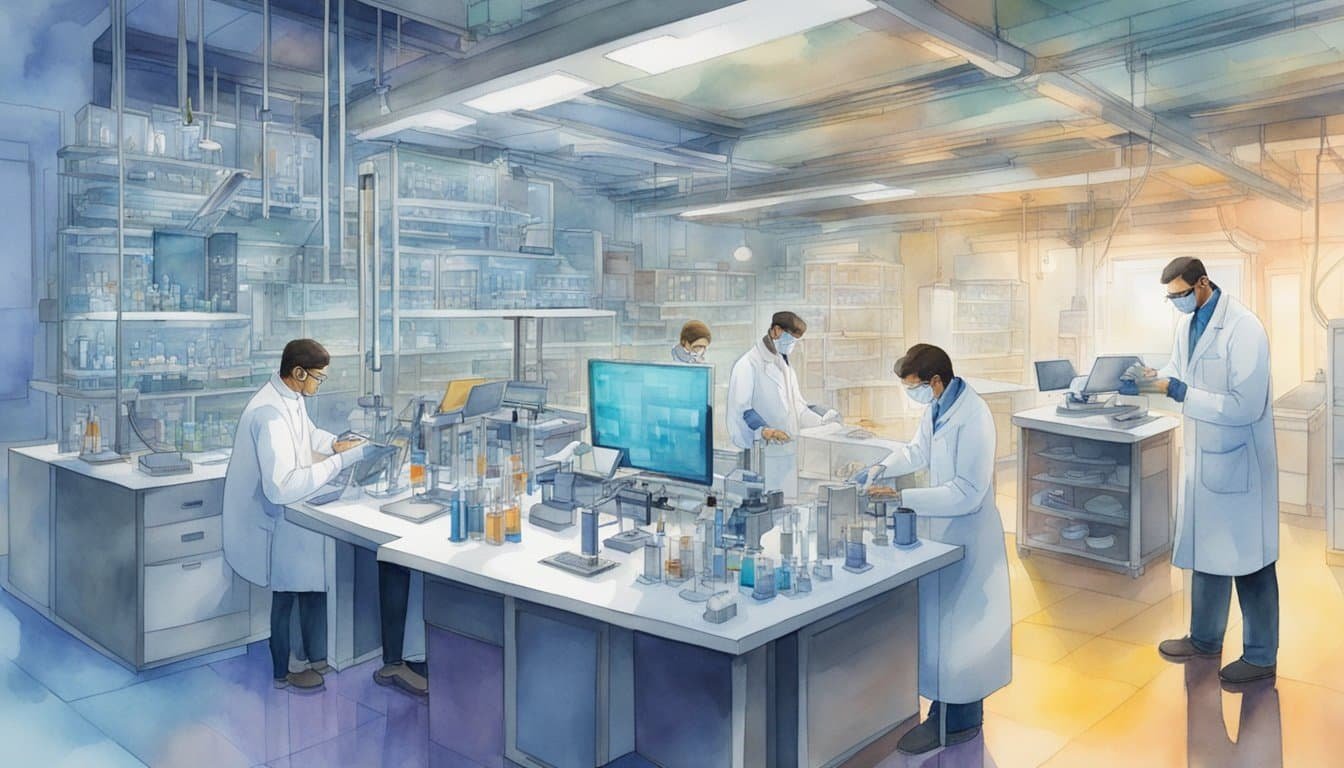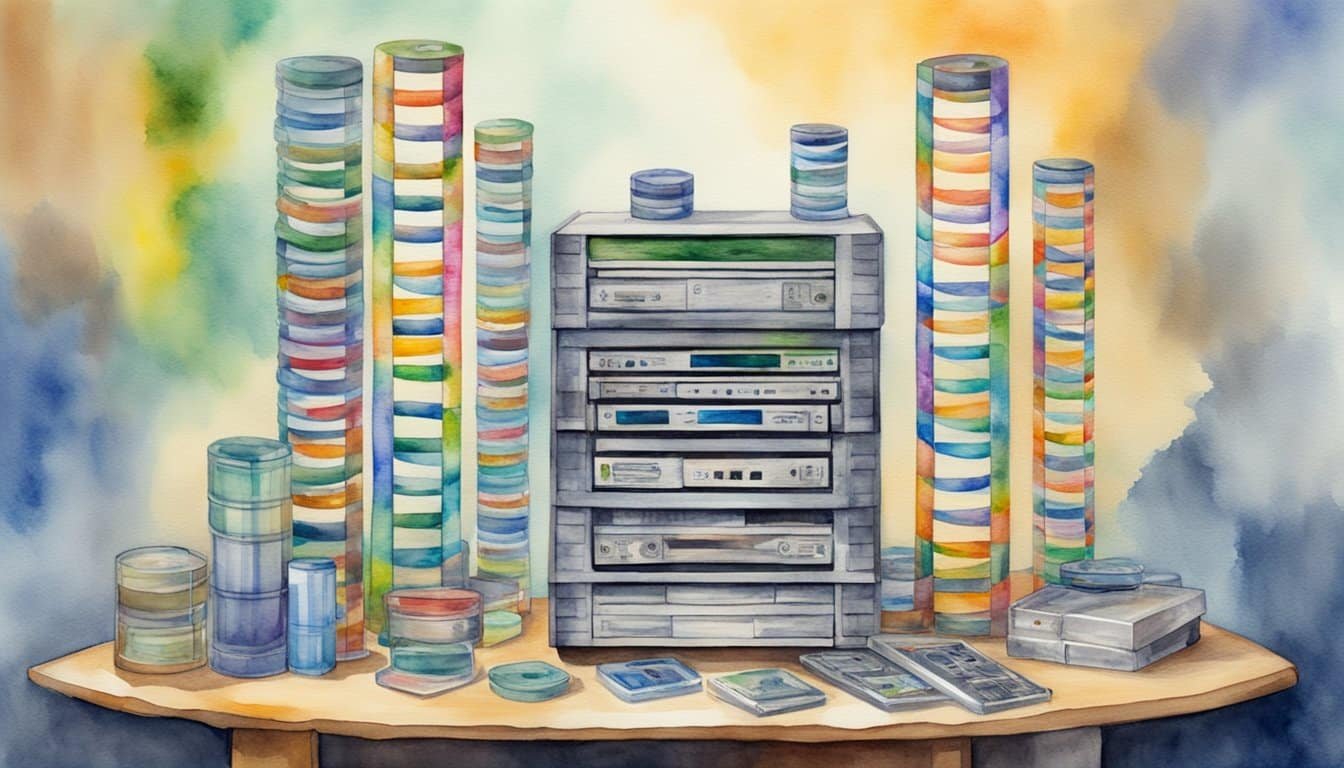Fundamentals of DNA as a Storage Medium
Imagine squeezing a film library into a sugar cube. That’s the potential of DNA for data storage. A drop-sized DNA can hold zettabytes of digital data.
DNA Data Storage Basics
DNA, the building block of life, is now an intriguing solution for high-capacity information storage. Digital data translates into the sequence of four nucleotides in a DNA molecule: adenine (A), thymine (T), cytosine (C), and guanine (G). Through encoding schemes, digital zeros and ones morph into this biological alphabet to create a dense and durable storage medium.
Advantages of DNA Storage
DNA is the star of long-term data storage. It’s compact and can outlast hard drives by centuries. DNA’s resilience to temperature fluctuations and biochemical reactions makes it superior for archival purposes. Moreover, DNA can offer a colossal leap in storage density — it’s possible to store petabytes of data in a gram of DNA, making it an attractive option for decreasing storage space and resource demands. And for a taste of future possibilities, foresee using nature’s ancient data system to keep humanity’s knowledge in a speck of genetic material.
Technical Aspects of Storing Data in DNA

Storing digital information in DNA is a cutting-edge concept that transforms the genetic material into a compact, durable medium for data archival. This section breaks down how digital data is encoded onto DNA, the numerous strategies to correct errors, and the methods used to retrieve the stored information.
Encoding Digital Data onto DNA
To encode digital data onto DNA, an encoding scheme is devised that maps binary data of ones and zeros to the nucleotides of DNA—adenine (A), cytosine (C), guanine (G), and thymine (T). The DNA Fountain technique is an example of an efficient algorithm used for this purpose. It efficiently packs data into the DNA sequence with minimal redundancy. The process of chemical synthesis translates the mapped data into a physical strand of DNA.
Error Correction and Redundancy
Error correction is a vital component of DNA-based data storage due to the potential for errors during synthesis and sequencing. Methods similar to those used in traditional data storage are adapted for DNA storage. Techniques like redundant storage, where multiple copies of the data are created, and sophisticated error-correcting codes ensure high fidelity in digital information storage. These practices are fundamental for compensating for error rates inherent in current DNA sequencing and polymerase chain reaction (PCR) technologies.
Decoding and Retrieving Data
To access the stored data, a DNA storage system uses sequencing technologies to read the DNA sequence and then employs an encoding scheme to interpret the genetic code back into digital form. This process is faced with challenges, including handling the errors introduced during synthesis and sequencing. The decoding process must accurately reconstruct the original data, with error correction methods playing a crucial role in ensuring data integrity. As DNA sequencing technology continues to advance, decoding becomes more efficient, paving the way for DNA to become a practical medium for genetic material-based data storage.
Challenges and Innovations in DNA Data Storage

DNA data storage has emerged as a revolutionary technology, but it is not without its hurdles and breakthroughs. This section delves into the nitty-gritty of the challenges faced, such as the high cost and efficiency bottlenecks, celebrates the significant research and development milestones, and gazes into the crystal ball to examine the future prospects of this fascinating field.
Cost and Efficiency Hurdles
The path to mainstream adoption of DNA data storage is littered with financial and practical challenges. The most pressing issue is the high cost associated with synthesizing and sequencing DNA, which currently makes it impractical for widespread use. This isn’t just pocket change we’re talking about; it’s a significant investment to get this tech off the ground. Researchers at institutions like the Wyss Institute are relentlessly working to develop methods that could drastically reduce costs and push the technology toward a more cost-efficient future.
Research and Development Milestones
Let’s take a moment to tip our hats to the brilliant minds in this field. Groundbreaking work by pioneers such as George Church and his team has set the stage for what’s possible. A truly outstanding accomplishment featured in Nature Communications demonstrated the ability to encode digital information into DNA with remarkable precision and to read it back without errors. This leap forward is akin to jumping from carving on stone tablets straight to inventing the printing press!
Future of DNA Storage Technology
Peering into the crystal ball, the future of DNA storage technology looks dazzlingly bright. Advances in synthetic biology and automation are shaping a world where it might be normal to have one’s entire digital legacy encoded into a speck of DNA. Imagine that—a lifetime’s worth of selfies and songs stashed away in a space no bigger than a tear drop! Companies are already looking to invest in this space, anticipating a time when durability and the low-cost long-term storage capabilities of DNA will transform data archiving forever.
Comparative Analysis of Storage Medias

In the information age, data is king, and how we store this invaluable asset is crucial. Comparing DNA storage with traditional storage formats not only highlights the evolution of data archiving but also hints at a future steeped in bio-technological advancements, offering a tantalizing glimpse into the vast potential of organic memory storage.
DNA Storage vs. Traditional Storage Formats
Traditional storage media, like magnetic tape, have been the workhorses of data centers for decades. Relied upon for their stability and capacity, these tapes can store petabytes of data and are integral to managing the global data load. Yet, as robust as they are, they can’t hold a candle to the potential density of DNA data storage.
One can scarcely believe it, but DNA, the very fabric of life, could revolutionize memory storage. A mere gram of DNA promises to store an almost unfathomable amount of data – estimates suggest up to 215 petabytes. Compared to the sizeable yet limited capacity of magnetic tapes, which top out far below the petabyte range, DNA’s storage capability reads like science fiction.
Impact on Data Centers and Big Data
The advent of DNA as a storage medium could be a game-changer for data centers and the world of big data. Data centers that once sprawled across vast halls, housing rows upon rows of servers, could potentially shrink dramatically. DNA’s immense storage capacity paired with its longevity presents a future where data can be archived for millennia, not just decades.
However, DNA data storage still faces significant hurdles before it can play a role in data centers. Currently, the process of writing and reading DNA data is not competitive with existing technology speed-wise. It’s a marathon runner in a sprint race, delivering endurance but not the rapid pace needed for quick data access. Yet, its potential impact on both data centers and big data is too significant to ignore, stirring up visions of a future where genome-based storage might become the norm.
This exciting technology could redefine how humanity approaches data storage, forging an incredible bridge between biology and digital technology.
Practical Applications and Real-world Use Cases

With the burgeoning field of biotechnology meshing with data science, DNA data storage is poised to revolutionize how we preserve information. This novel method transcends traditional storage media by its capacity for longevity and compactness, encoding data into the very fabric of life—DNA.
Commercial and Industrial Applications
In the commercial sphere, DNA storage systems are paving the way for a new era of information management. Companies can encode their data into DNA sequences, utilizing sophisticated error correction codes to ensure accuracy and longevity. The procedure involves converting binary code—the language of computers—into oligonucleotides, short DNA strands that can then be easily stored and retrieved. Thanks to the input from researchers like Sri Kosuri from Harvard University, who have contributed significantly to the field, enzyme-driven processes for encoding and decoding these sequences are becoming more efficient, carving out a niche for DNA data storage in industries ranging from pharmaceuticals to aerospace.
Scientific Research and Bioinformatics
In scientific research and bioinformatics, leveraging DNA-based information storage has immense potential. It’s an ideal tool for managing the colossal amounts of data generated by genomic studies and other aspects of molecular storage. By utilizing DNA as the storage medium, researchers not only shrink their physical storage needs but also embrace a compatible format for biological data. This synergy promises to make in vivo data storage a reality—where information can be effectively inserted into living organisms.
Data Archiving and Historical Preservation
For data archiving and historical preservation, DNA data storage offers an unprecedented solution that could withstand the test of time far beyond traditional storage mediums. It promises to safeguard human knowledge, from ancient texts to digital media, encoding them into a format that could last thousands of years without substantial degradation. Converting digital archives into a biotechnological library holds the key to ensuring that the trove of human history and achievement is not lost to physical decay or technological obsolescence. This move to a more robust form of storage, bolstered by DNA’s natural encoding methods such as substitutions, ensures the fidelity of the historical narrative for future generations to decode.

